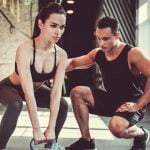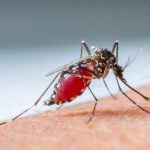
If your work has you standing a lot or if you are returning to such a job after a gap, it might require a period of adjustment. “Some are less active during the summer months and this can be a factor in getting back into the swing of things,” said Dr Ronald Lepow, assistant professor of orthopedic surgery at Baylor. “For those who stayed active, their routine will not be too different in the fall, but there may be an adjustment period for those who were less active.” He provides 10 tips for good foot health:
* Look for shoes whose fitting is right. They should be wide enough for your feet and deep enough in the toe area so that the toes can move around easily.
* Shoes should support the arch and have a firm heel counter so the heel does not slip around in the shoe.
* Open-back or sling-back shoes are not as supportive. If you are allowed to wear a more casual shoe in your workplace, Lepow suggests an athletic shoe.

* If shoes do not offer adequate support, there are over-the-counter arch support products available as well as custom-designed orthotics through a podiatrist.
* Common problems related to unsupportive shoes include plantar fasciitis, or pain on the bottom of the foot, and Achilles tendonitis, pain in the back of the heel. “If you have gone from a period of relative inactivity to being on your feet for seven hours a day, you might develop one of these conditions,” says Lepow.
* If you do have pain, Lepow suggests stretching exercises to help relieve discomfort. Soaking feet in a whirlpool at the end of the day also can help relax the muscles.
* Another common problem can be excessive perspiration, which can lead to athlete’s foot. Lepow advises using a good foot powder to prevent sweating and suggests not wearing the same shoe every day. Instead, try to use a shoe tree and alternate your shoes every third day to give the inside of the shoe time to dry out. If this doesn’t work, try using an antiperspirant on the bottom of the feet each day.
* If you do get athlete’s foot, it’s important to determine what type it is in order to treat it. Different over-the-counter products are available for dry, scaly skin versus red, hot and swollen skin on the feet.
* For students, Lepow suggests purchasing supportive shoes that are well-suited for school-day activities rather than sandals or flip-flops.
If these problems are prolonged and are not relieved, Lepow suggests seeing a podiatrist to see if a more aggressive treatment or physical therapy is appropriate.
[“source=hindustantimes”]



